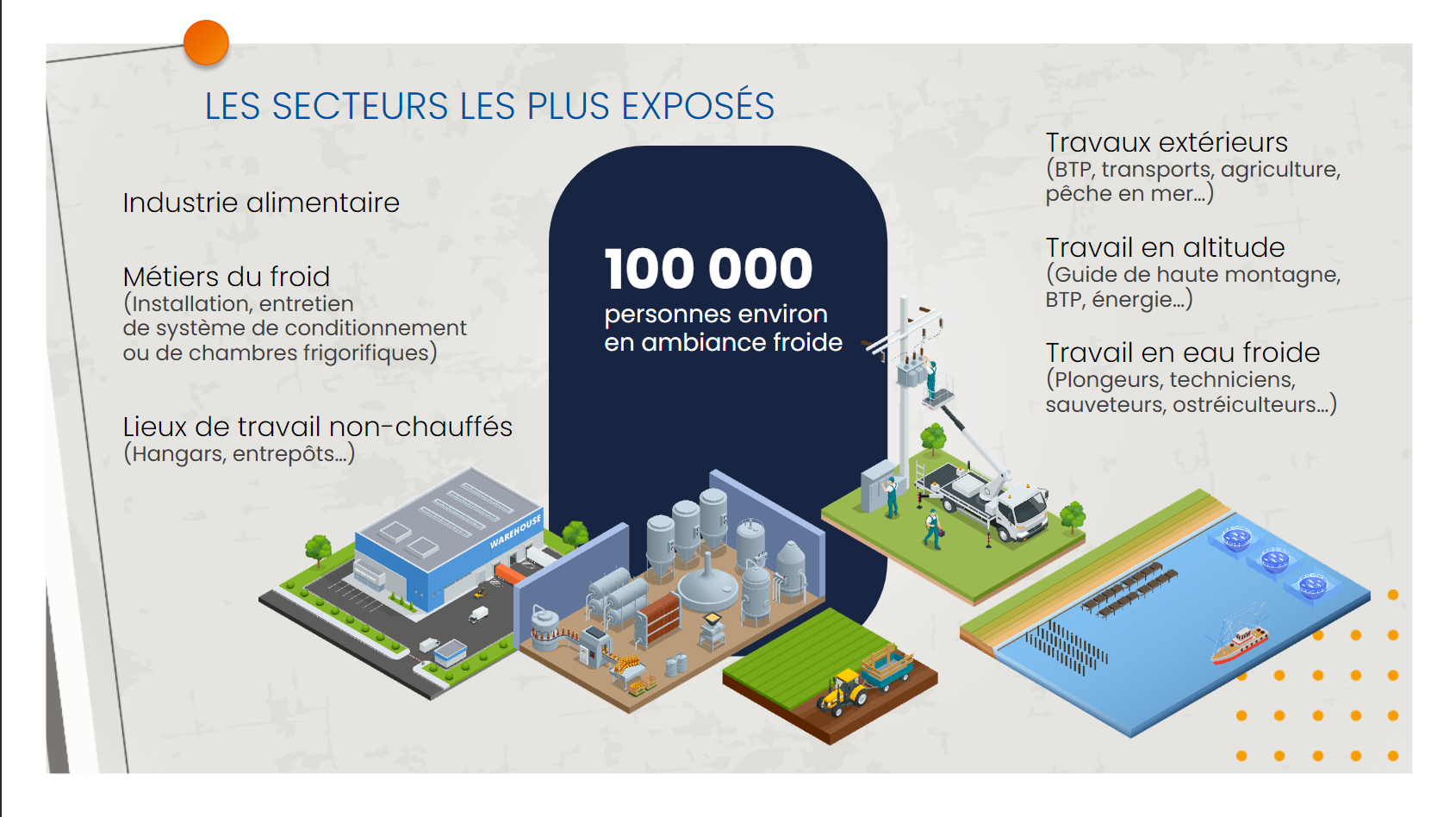Description
Employees often encounter cold, whether natural or artificial, in various work settings such as cold storage, walk-in coolers, or outdoor work during the winter. This direct exposure to cold poses risks to the health of workers and also increases the risk of accidents. When the ambient temperature drops below 5°C, increased vigilance is necessary. The most effective preventative measure is to avoid or limit the time of exposure to cold.
This module presents environments marked by very low temperatures as well as the consequences that this can have on health.
Targets
All employees working in the sectors of:
- The food industry,
- Cold trades (installation, maintenance of conditioning systems, refrigerated rooms, etc.),
- construction,
- Transportation
- Agriculture,
- Sea fishing,
- Work at altitude (high mountain guide, construction, energy, etc.),
- Work in cold water (divers, technicians, rescuers, oyster farming, etc.).
Teaching methods
This module is structured by a deductive educational approach, moving from theory to practice. Theoretical content screens are based on an affirmative (top-down) methodology followed by a summative assessment in the form of QUIZ.
Content
- Introduction
- The most exposed sectors
- Health risks
- Hyperthermia: a sometimes life-threatening emergency
- Assess the risks
- Additional risk factors
- Prevention measures
- Equip yourself accordingly
- Assessment (5 questions)

